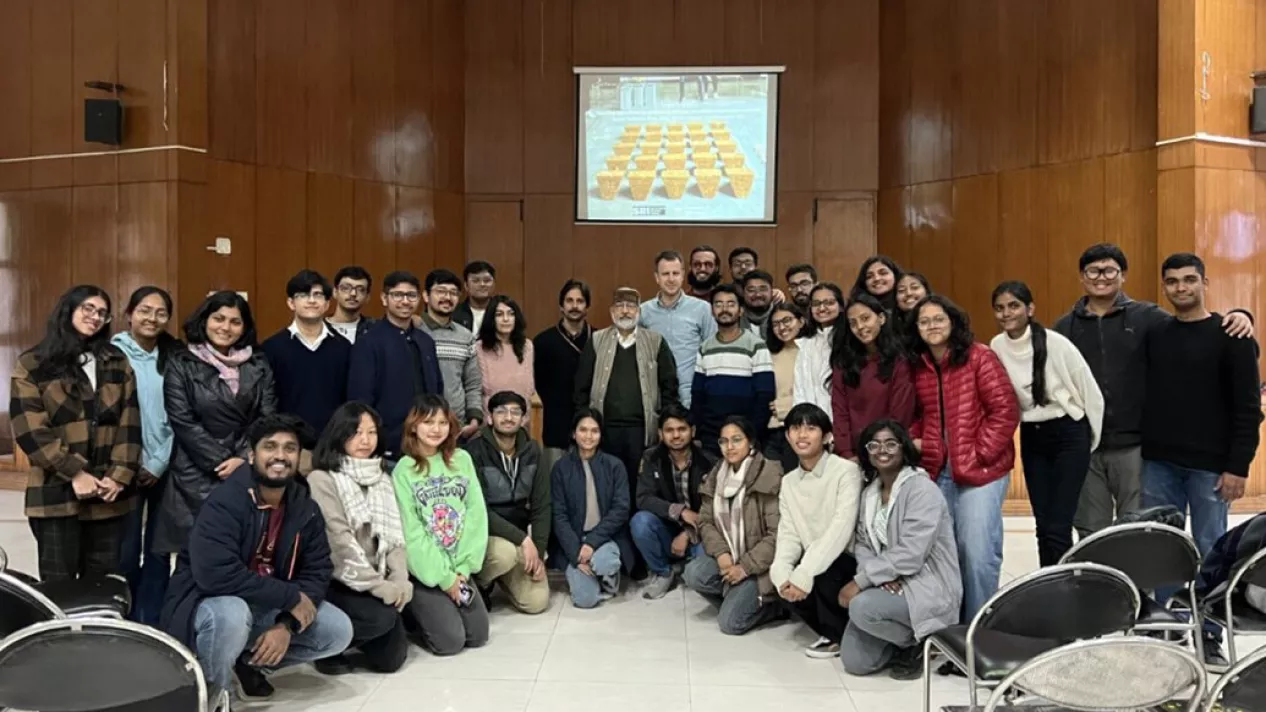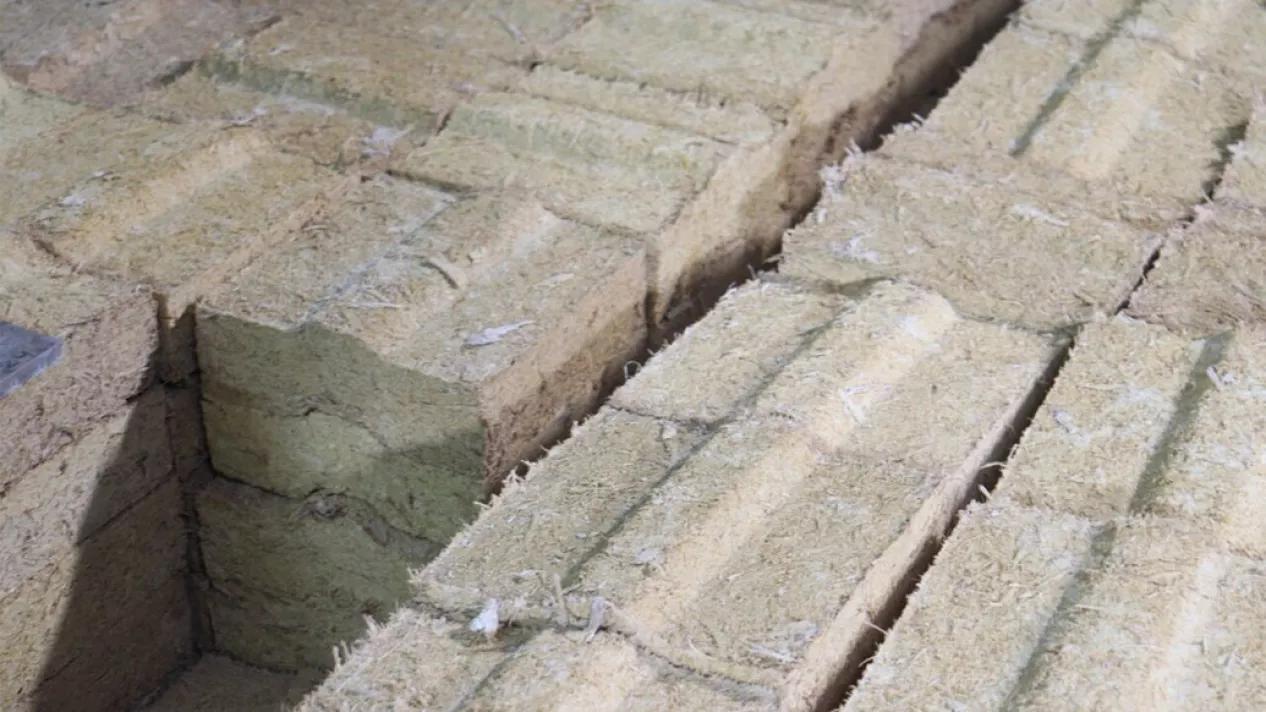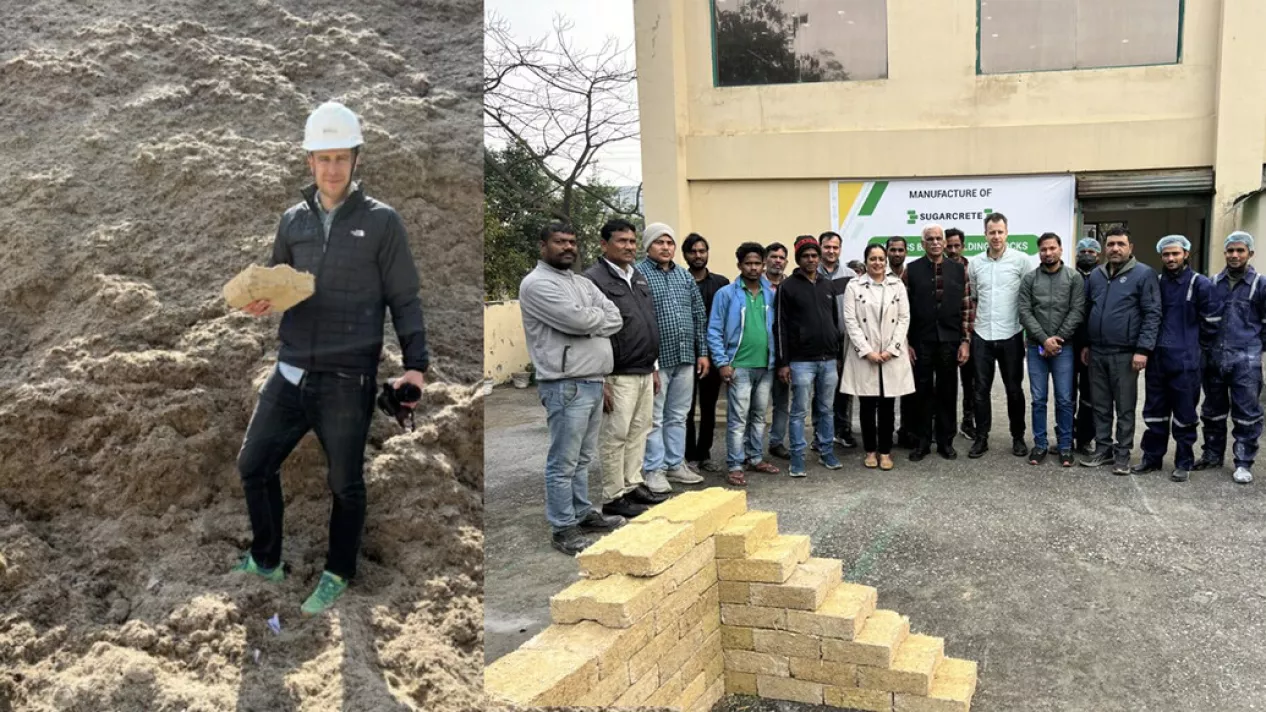Emerging Opportunities for Sugarcrete in the Indian Market
A visit to India by a University of East London (UEL) academic has raised the prospect that Sugarcrete® could have a significant impact in the south Asian country, especially in lowering carbon emissions in the building sector. Senior Lecturer Armor Gutierrez Rivas of UEL’s School of Architecture, Computing and Engineering (ACE), travelled to India to see how Sugarcrete® could be used for a variety of construction projects.
Sugarcrete® is an alternative to bricks and concrete that uses sugarcane by-products. The material was developed at ACE, in collaboration with UEL’s Sustainability Research Institute (SRI), and with the support of Tate & Lyle Sugars. It’s made from sugarcane fibres left over after sugar production, producing bricks with a carbon footprint six times smaller than traditional bricks.
Mr Gutierrez Rivas met with academics from the School of Planning and Architecture (SPA) in Delhi. The school is India’s national centre of excellence in the fields of planning and architecture. They discussed opportunities for collaboration between UEL and the SPA, with hopes that Sugarcrete® will be used to build an affordable housing prototype and for other projects in Delhi. He also gave a lecture to students at the school.

Mr Gutierrez Rivas also visited a partner’s Sugarcrete® production site outside Delhi, where 400 bricks are made daily. They’re produced and used locally, reducing both transport costs and the environmental impact. Local partners are currently looking into constructing buildings nearby using the material.

He also went to Daurala, a sugarcane factory, two hours from Delhi, in Uttar Pradesh. It’s one of the largest sugarcane processing facilities in India, and a potential manufacturing site for Sugarcrete®. If the material is made there, it would have several major advantages. Sugar planation workers only work part of the year, so making Sugarcrete® should boost their incomes, while bagasse, the fibrous material that remains after crushing sugarcane, could become a valuable by-product, as it would be used to make the bricks. In addition current brick production is energy intensive and limited to periods of dry weather. Sugarcrete® can be made year-round and needs far less energy to be produced.

Speaking after his trip, Mr Gutierrez Rivas stressed the importance of such visits for exchanging knowledge and fostering potential collaboration with Indian partners. He said,
This research trip has demonstrated the potential of Sugarcrete® as a construction alternative and the increasing interest to deploy the material within the Indian context, both at an academic and industry level. It was inspiring to understand the social aspects of sugarcane harvesting and to discuss how Sugarcrete® can offer actual employment opportunities, particularly for women during the off-season period.”
Alan Chandler, Co-Director of the SRI, emphasised the potential impact of Sugarcrete® in India. He said, “Understanding the role of women working in parallel to the very physical and seasonal process of cane cultivation allows us to see where Sugarcrete® can provide a decarbonised, non-polluting and healthier income stream for working families. 1.5 billion bricks are handmade and coal fired in rural communities throughout the global south – replacing the firing process is about more than carbon, it is about health and dignity of work.”
UEL’s experts on Sugarcrete® will return to Delhi in the summer to continue their collaboration with the SPA and other partners.

